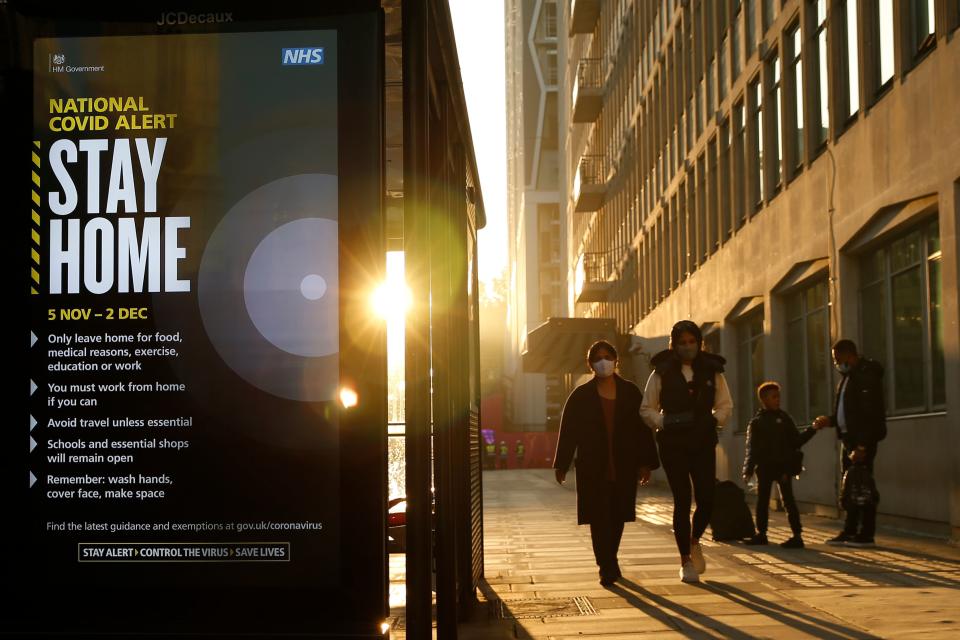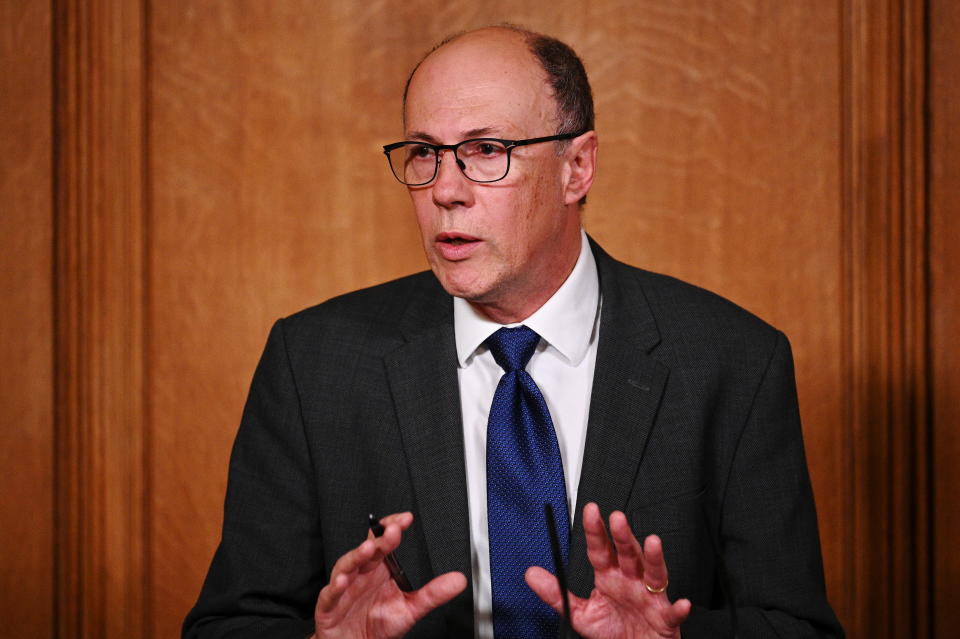UK R rate has fallen for second week running, according to Sage

The UK’s rate of coronavirus infection is between 1 to 1.2, but the virus is still spreading at an ‘epidemic’ speed.
Last Friday the R rate for the UK was 1.1 to 1.3, a slight drop on recent weeks, with a growth rate range of 2% to 4%.
This week’s published growth rate is given as 1% to 3%, meaning the number of new infections is growing by 1% to 3% every day.
The latest R rate range, which is between 1 and 1.2, still represents “widespread growth” of transmissions across the country.

Experts on the government's Scientific Advisory Group for Emergencies (Sage) publish the latest figures every Friday.
A statement from the group highlighted that the difference between R rates in different countires in the UK has made it harder to give an overall figure for Britain as a whole.
Watch: Coronavirus UK deaths rise above 50,000
It said: “Given the increasingly localised approach to managing the epidemic, particularly between nations, UK level estimates are less meaningful than previously.
“It is Sage’s expert view, however, that this week’s estimates are reliable, and that there is still growth of the epidemic in England.”
On Thursday, there were a record 33,470 new cases of coronavirus in the UK, prompting the country’s top medical experts to urge people to follow lockdown rules and not leave their homes unnecessarily.
Data published on Friday morning by the Office for National Statistics (ONS) suggested there were 654,000 people with COVID-19 in England between 31 October and 6 November, the latest dates for which data is available.

The survey, which tests thousands of people in English homes whether they have symptoms or not, also found an estimated there were around 47,700 new cases per day during this period. This equates to around 1onein every 85 people.
Medical director of NHS England professor Stephen Powis told a Downing Street press conference on Thursday that news of a vaccine should not lead to a relaxation in the rules. He said it “might feel like the calvary is coming and we can relax about the restrictions” but added it was “vital” to follow the coronavirus guidance around ‘hands face and space’ and testing.
Friday’s estimates represent the transmission of COVID-19 over the past few weeks, due to the time delay between someone being infected, having symptoms and needing healthcare, so cannot be a 100% accurate reflection of the situation for the date published.
Estimates for R and growth rates are shown as a range - the true values are likely to lie within this range.
If R is greater than one then the epidemic is growing, if R is less than one the epidemic is shrinking. The higher R is above 1, the more people one infected person infects and so the faster the epidemic grows.
The Regional R numbers across England are as follows:
East of England 1.1 to 1.4 (unchanged)
London 1.0 to 1.2 (down from 1.1 to 1.3)
Midlands 1.1 to 1.3 (unchanged)
North East and Yorkshire 1.0 to 1.2 (down from 1.1 to 1.2)
North West 0.9 to 1.1 (down from 1.0 to 1.1)
South East 1.2 to 1.4 (unchanged)
South West 1.2 to 1.4 (unchanged)
Watch: What types of coronavirus test are available?
Coronavirus: what happened today
Click here to sign up to the latest news, advice and information with our daily Catch-up newsletter

 Yahoo News
Yahoo News 

